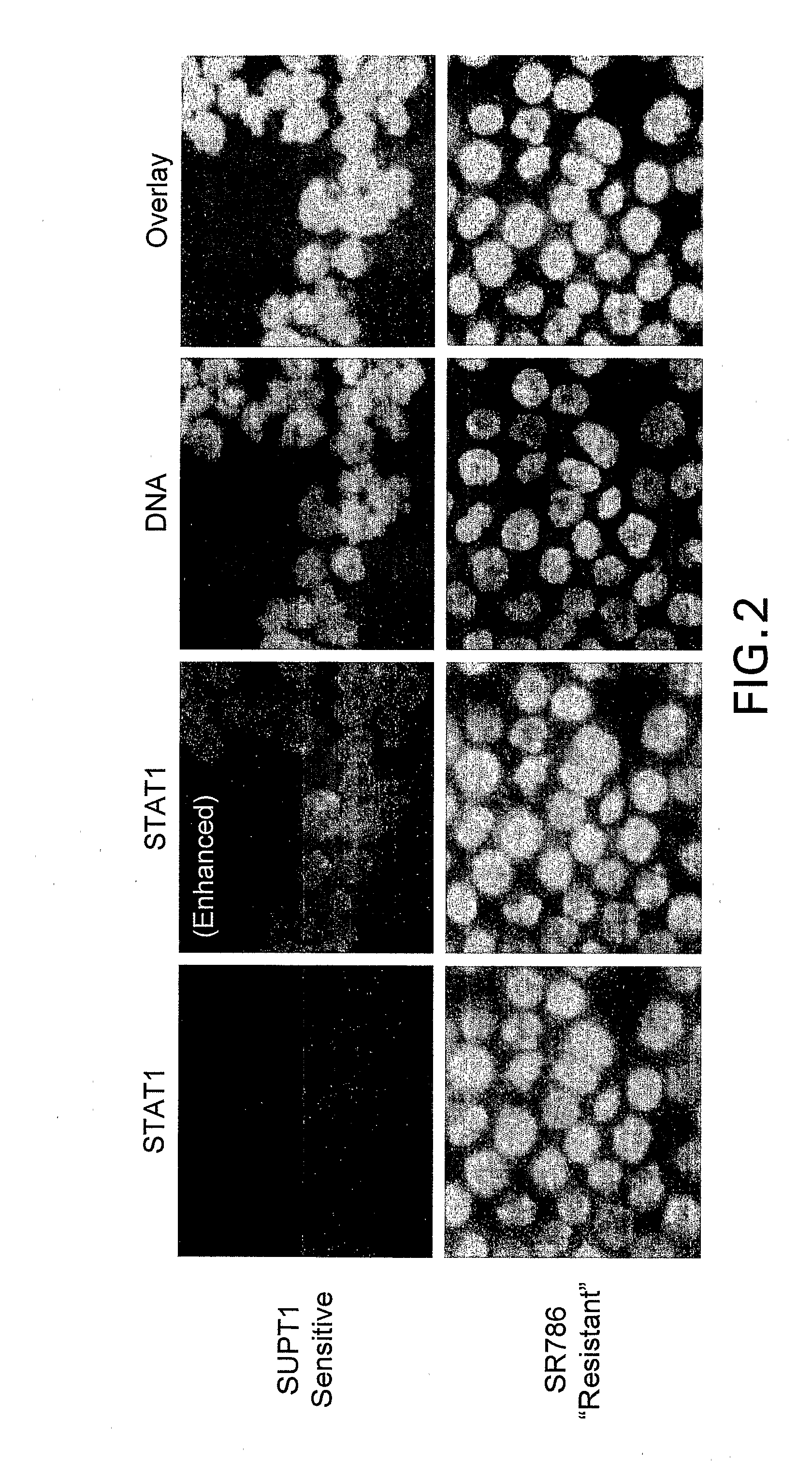Methods for Predicting Treatment Response Based On the Expression Profiles of Protein and Transcription Biomarkers
a transcription biomarker and protein technology, applied in the field of novel biomarkers, can solve the problems of disease contributing to a major financial burden for the community and individuals, tumorigenic transformation, and destabilization of the interaction of histones with dna, and achieve the effect of improving predictive power over analysis and determining the responsiveness of saha treatmen
- Summary
- Abstract
- Description
- Claims
- Application Information
AI Technical Summary
Benefits of technology
Problems solved by technology
Method used
Image
Examples
example 1
Materials and Methods
[0286]Cell Lines: Refer to Table 1 for a list of cell lines used in this experiment.
[0287]The cell lines used by CMTI (Cell & Molecular Technologies, Inc) for this study were cells identified by Merck & Co, Inc. The cell lines were grown in RPMI 1640 / 7.5-20% fetal bovine serum / L-Glutamine (Invitrogen) and maintained in a Heraeus HeraCell 240 humidified 5.0% CO2, 37° C. incubator. For in-house studies, cell lines were obtained from the American Type Tissue Culture collection, and maintained in RPMI 1640 / 10% fetal bovine serum, 1% Glutamax and 1% penicillin-streptomycin (Gibco).
[0288]Drug Source Vorinostat was prepared as described in U.S. Pat. Publ. 2004 / 0122101A1. The compound was provided as a powder and prepared as a 30 mM stock solution in DMSO. Inhibitors of JAk kinases 2-(2-chlorophenyl)-9-fluoro-3,6-dihydro-7H-benzo[h]imidazo[4,5-f]isoquinolin-7-one (Compound A) and JAK 1 inhibitor-2-tert-butyl-9-fluoro-1,6-dihydro-7H-benzo[h]imidazo[4,5-f]isoquinolin-7-on...
example 2
Materials and Methods
[0301]An expanded set of 50 human cell lines, including the twelve cell lines listed in Table 1, were assembled (Table 2), that represent a range of lymphoid tumor types (including 10 diffuse large B cell lymphoma, 10 Burkitt lymphoma, 8 multiple myeloma and 5 CTCL). As detailed in Example 1, each of these cell lines was cultured in vitro and response to vorinostat was assessed at 8 different concentrations (0 and 0.04 to 30 micromolar) at 24 hr using the ApoONE™ Homogeneous Caspase-3 / 7 Assay (Promega) and at 24, 48 and 72 h using the CellTiter-Blue™ Cell Viability Assay (Promega). The CellTiter Blue assay was used to determine the vorinostat IC50 for each cell line. A representative subset of the data obtained are presented in Table 2.
TABLE 2Response of various cancer cell lines to vorinostatCatalogIC50(μM)Caspase 3,7Reference(Cell Titre-activation- 24 hSubtypeNumberCell lineBlue assay)(1 μM vorinostat)*Lymphoma -T cellCRL-1942SUP_T10.32+Lymphoma - Pre BCRL-104...
PUM
| Property | Measurement | Unit |
|---|---|---|
| Molar density | aaaaa | aaaaa |
| Molar density | aaaaa | aaaaa |
| Molar density | aaaaa | aaaaa |
Abstract
Description
Claims
Application Information
 Login to View More
Login to View More - R&D
- Intellectual Property
- Life Sciences
- Materials
- Tech Scout
- Unparalleled Data Quality
- Higher Quality Content
- 60% Fewer Hallucinations
Browse by: Latest US Patents, China's latest patents, Technical Efficacy Thesaurus, Application Domain, Technology Topic, Popular Technical Reports.
© 2025 PatSnap. All rights reserved.Legal|Privacy policy|Modern Slavery Act Transparency Statement|Sitemap|About US| Contact US: help@patsnap.com



